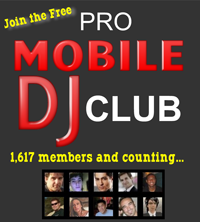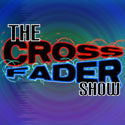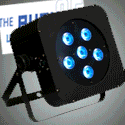by Adam J. Hirschhorn
On July 10th 2011, I stepped on to the Swiss Airlines plane to travel to the “holy land,” Israel. I was very excited to experience an educational vacation provided by Israel Experts in the state that I learned so much about when attending Hebrew School so many years ago.
I was curious about differences between the way Bar/Bat Mitzvahs are conducted there versus here in the United States, so I asked several of the locals and a Mitzvah DJ from Tel Aviv about how Israeli’s conduct these celebrations. I was surprised to learn of the similarities and differences. I even had a chance to attend a Bar Mitzvah service in Jerusalem.
The Meaning Behind a Bar/Bat Mitzvah
Overlooking the city of old Jerusalem and the Western Wall, I was also blessed to participate in a Mitzvah service for 10 people who had not been Mitzvah’d at 12 or 13, but waited to experience this in Israel as an adult.
Rabbi Steve Burnstein explained that a Bar/Bat Mitzvah ceremony is a custom not a commandment, age 13 for a male and 12 for a female is when a child becomes obligated to the ritual responsibilities of Jewish life. This is referred to as the “commandment age,” the “age of majority,” or a “religious coming of age.”
At this point in a young adult’s life, he or she is presumed to be responsible for those religious obligations independent of one’s parents.
This point in a teen’s life often marks enormous growth and maturity reflected by several years of study and practice before the Bar or Bat Mitzvah.
Combined with the responsibility of Jewish adulthood, this event often brings an overwhelming wave of emotion to parents, close relatives, and friends. It is customary for families to celebrate a rite of passage, as well as bring extended families together from far away to reunite for a joyous celebration with music and great food after the traditional service.
The Israeli Bar Mitzvah Reception
Mitzvah receptions are held only in the evening and guests arrive at the hall (called an Ulam in Hebrew) for a “meet and greet” at the entrance where the Bar Mitzvah boy and his family stand. This is where and when guests give gifts or slip money into an envelope for the celebrant.
Next the guests enter a lobby, garden or entrance area where there is bar and a buffet that includes hot and cold selections. People mingle, eat and drink standing. If the hall does not have such an area, the guests are directed to their tables in the main hall straight away. On the tables there are a variety of salads and rolls, which they can nibble on while listening to background music and waiting for everyone to arrive at the party.
The Israeli DJ/MC
The DJ crew consists of a one-man show with an assistant. The setup is very simple and decorated with many high-end lights that hang from the event hall ceiling.
The first major happening is the Bar Mitzvah boy’s grand entrance. The DJ asks the guests to pay attention and welcome the celebrant and his family with a round of applause as they enter the hall.
They generally walk from the hall entrance to the dance floor, turn around and stand awkwardly while music blasts out from the speakers. Everyone joins the family in the middle and rise from their seats to dance to some high-energy Israeli music.
The Grand Entrance
The Mitzvah boy’s entrance can be done several ways; he can come in singing. Accompanied by drummers and dressed as an ancient Moroccan Jew with eclectic costumes, seated on a raised platform, or with all his school friends on either side holding candles.
The guests are asked to take their seats while the celebrant and his family gather in front of the DJ’s area onto the dance floor.
Then the Bar Mitzvah boy reads from a “drasha.” This speech can be combined with the lighting of a giant menorah/candelabra that can hold 14 candles, one for each of the boy’s 13 years and one for next year.
As he reads he mentions important people in his life, the Mitzvah boy either lights the candles in their names or he invites them up to the stage to light it themselves. A few candles are usually lit for fallen soldiers, Gilad Shalit or family members who have passed away.
Alternatively the “drasha” can be religious, where a rabbi usually writes it for the boy and centers around the weekly bible portion and how it relates to the celebrant and his coming of age.
After this the guests are thanked for coming then the lights are dimmed and the Bar Mitzvah boy has a slow dance with his mother. They are then joined by his dad and siblings, and eventually the guests are invited to join in, as well.
Throughout the event there is dancing to a variety of Israeli music, international hits and traditional hora dances where the men and woman and kids dance altogether.
The hall usually sets a time limit to the Bar Mitzvah celebration, and it is often midnight. At the agreed time the DJ will announce that the evening has come to an end and he will invite everyone to stand for the Israeli national anthem. At this point the celebration is over.
What This Trip Meant to Me
I can honestly say that my trip to Israel was not only wonderful and interesting – but life changing both personally and professionally.
As a DJ who specializes in Mitzvahs, I believe that my experiences there will significantly enhance my knowledge and skills as an entertainer.
If you ever have the opportunity to visit this beautiful part of the Middle East, my advice is to jump on it. You won’t be disappointed!








